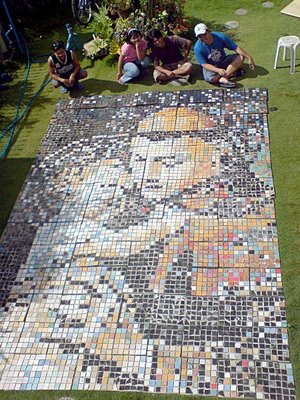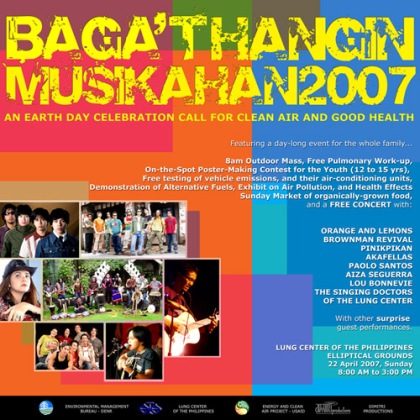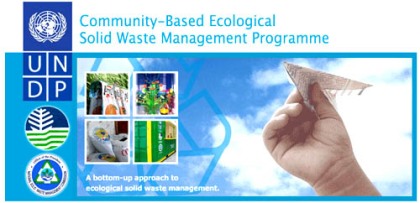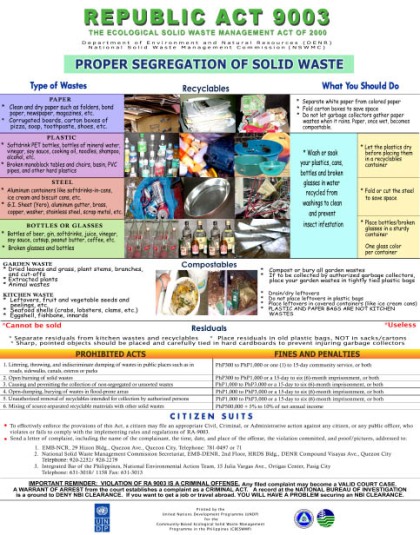Filed under: Uncategorized
think green has moved here.
thanks.
“… or trade it in for big discounts.
Simply trade in your used car / truck / jeep / generator batteries (any brand) at your nearest Motolite dealer to earn instant cash or get big discounts when you purchase new Motolite batteries.
Trade-in value as of March 1, 2007:
LM7 – PhP 100.00, NS40 – PhP 120.00, DIN55/1SN/Ns60 – PhP 160.00, 1SM – PhP 170.00, 2SM – PhP 200.00, DIN66 – PhP 190, G58 – PhP 210.00, G65 – PhP 180.00, G34 – PhP 220.00, 6SM – PhP 340.00, 2D – 430.00, 4D – PhP 530.00, 8D -PhP 670.00, PT110 – PhP 340.00
Do your share in saving the environment:
Used batteries can be harmful to the environment when handled improperly, and should only be handled by licensed and authorized recycling facilities. Let’s do our share by directing used and junk batteries to authorized Motolite dealers. Used batteries will be recycled by Philippine Recyclers Inc. (PRI), the country’s only ISO-14001 certified and environmentally-compliant recycling facility. You earn your cash while protecting the environment. So start trading those batteries now.
A project of the Philippine Recyclers, Inc., Sponsored by Motolite Batteries and Motolite Express Hatid”
** ad is posted at The Philippine Star (March 31 issue, page 20).
The effect of increased solid wastes in our surroundings is always considered to be a major problem in the country. The government and institutions are trying to solve this problem in ways that are sustainable enough to reduce the amount of generated wastes.
One of the effective ways of controlling waste generation is through source reduction. Source reduction can be a successful method of reducing waste generation. Practices such as backyard composting, two-sided copying of paper, and transport packaging reduction by industry have yielded substantial benefits through source reduction.
Source reduction has many environmental benefits. It prevents emissions of many greenhouse gases, reduces pollutants, saves energy, conserves resources, and reduces the need for new landfills and combustors [Official Website of United States of America (USA) Environmental Protection Agency (EPA), 2004].
One more way of reducing wastes generated is through recycling which is the effective reuse of products and it diverts items, such as paper, glass, plastic, and metals, from the waste stream.
These materials are sorted, collected, and processed and then manufactured, sold, and bought as new products (Official Website of US-EPA, 2004). In the country, there are already known companies that practice the effective recycling and reuse of waste materials into creative and artistic products such as bags, pen holders, tables and chairs and are successful in local and international market.
Another form of recycling is composting. Composting is the controlled biological decomposition of organic matter, such as food and yard wastes, into humus, a soil-like material. Composting is nature’s way of recycling organic waste into new soil, which can be used in vegetable and flower gardens, landscaping, and many other applications (Official Website of US-EPA, 2004).
There are many discussions and suggestions on ways of reducing our generated wastes and it is not new to us. However, the most important step in solving these problems comes from us initially.
Solid waste reduction can be observed in simple ways that do not require much effort. One example would be carrying your own bags and used plastic bags when going to shop in the market or malls. In this way, extra plastic bags provided by the stores will not end up as another wasted solid material in the future.
A little creativity can also help to transform these waste materials into a wonderful creation, which can be of use and can be a start of a small business. With crafts as part of the option, proper waste segregation observed in the office or at home can be very helpful to junk dealers and recyclers that reuse these materials and make good business.
Author: Ms. Alma Arcena, Miriam College, for SWARMPlan News.
… an Earth Day Celebration Call for Clean Air and Good Health.
See yah!
Here are links to the “Let’s Care for our Air” series of videos, produced for the Clean Air Month, aired at MYX23 and ABS-CBN.
Christian Bautista on Open Burning of Garbage (2.4mb)
Heart Evangelista on Smoking (2.2mb)
Lou Bonnevie on smoke-belching vehicles (2.2mb)
and the Australian Youth Ambassadors on environmental youth action (2.1mb)
The videos were produced by Dimitri Productions for EMB-DENR.
Filed under: garbage
The Community-Based Ecological Solid Waste Management Program (CBESWMP) of the United Nations Development Programme (UNDP) became recipient to the Merit Award on Communication Management – Economic, Social, and Environmental Development Division at the Gold Quill Awards of the International Association of Business Communicators-Philippines.
The Program, in partnership with the National Solid Waste Management Commission-Secretariat (NSWMC) of the Department of Environment and Natural Resources (DENR), served as catalyst for local government units to fulfill the mandates of the Republic Act No. 9003, or the Ecological Solid Waste Management Act of 2000 through a bottom-up approach using 10 pilot areas in 11 barangays in Metro Manila. These pilot areas now serve as showcases of the successful implementation of ecological solid waste management, which other communities could emulate.
The Program has also produced several key information and education campaign materials, including the RA9003 poster, the “Basura Kid at Iba Pa” comic book, and the Solid Waste Management Made Easy Handbook (for households) and Fieldbook (for local government units and ESWM implementers). These materials have been developed to ensure the sustainability and replicability of the Program, and are in fact, being reproduced by ESWM stakeholders nationwide, including SM Malls and the Philippine Economic Zone Authority.
The Gold Quill Awards was held at the Philippine International Convention Center last March 16, 2007. To date, the success of the CBESWM Program continues as five out of the ten pilot sites qualified in the Nationwide Search for Model Barangays on Eco-Waste Management 2006-07.
Filed under: environment
The Department of Environment and Natural Resources, in cooperation with the Earth Day Network Philippines will be leading the celebration of the Earth Day this coming April 22, with a vision to aggressively campaign for a concerted effort from all sectors of the society to sustainably manage the environment.
Theme for the year is “Stewardship in Action” focusing on green governance, green sacraments, green economics, and green choices.
Campaign would be against seven eco battles: for clean air, for clean water, for water security, for sustainable resource extraction, for biodiversity conservation, for climate change reversal, and for garbage free communities.
Anyway, as part of the celebration, there will be a free concert (Earth Jam 2007) called Baga’t Hangin Musikahan 2007: An Earth Day Celebration for Clean Air and Good Health. Artists like Lou Bonnevie, the Pinikpikan, True Faith, and Brownman Revival are to grace the event, along with, of course, environmentalists. Unity for Mother Earth.
Fight!
Filed under: garbage
So how does one manage garbage? first key: DISCIPLINE.
… and then the basic segregation, coupled with the principle of “reduce, reuse, and recycle”! For yuor guidance, here is a poster from the Community-Based Ecological Solid Waste Management Project of the United Nations Development Programme.
Download the large file here: republic-act-9003englishversion.pdf
Filed under: garbage
The Philippines has eternally been famous for its splendid array of natural resources, embraced by the unconscious charm and hospitality of the Filipinos. The world has witnessed the country’s growth — from its reign as the center of Asian trade in the golden years to its thriving pursuit as a global economic hub today.
We are a haven of consumers, impacted by a direct need for products, and some, by ingenious marketing campaigns, a strong western influence. However, as many Filipinos may have forgotten, such a consumerist lifestyle necessitates a serious dose of discipline.
The line, “Ang Basurang Itinapon Mo, Babalik Din Sa’yo” (Your Garbage Will Come Back to You) has become a rallying call pushed among the citizenry as a reminder to be responsible in the management of their respective wastes. The message is sticky, but it did not sell, for even in the country’s National Capital Region alone, there had been an estimated 6,700 tons of generated garbage per day, and, only about 720 tons of them are recycled or composted.
The Payatas nightmare in July 2000 proved a significant milestone in changing the views of the government and the citizenry on waste concerns – a disaster which proved its significance for a deeper realization to change a system, which paved the way for the enactment of Republic Act No. 9003 (RA 9003), or the Ecological Solid Waste Management Act of 2000.
1. What is RA 9003?
The Act essentially emphasizes the philosophy of waste as a resource that can be recovered. It lobbies the principles of reduction, reuse, recycling, and recovery as means to minimize and manage the country’s solid waste management problem, to be implemented by each and every sector of the society, from the government to commercial establishments and industries, and most importantly, to the households. The Act also
convened both the government and the private sector, as member-agencies of the established National Solid Waste Management Commission. Such merging of sectors has been echoed in the campaign, “Sa Sama-Samang Pagkilos, Basura ay Maisasaayos!” (Together, We Can Manage Our Garbage!), emphasizing the need for Filipinos to unite for change.
2. Are there any programs and projects being initiated by the National Solid Waste Management Commission?
Since the enactment of RA 9003, the Commission has engineered programs and projects that would raise, among Filipinos, consciousness on the proper practice of solid waste management. A Nationwide Search for Model Barangays on Ecological Waste Management System is now on its second round of implementation, to recognize, reward, support, and help ensure the sustainability of existing ecological solid waste management programs among local government units. This was almost synonymous to a kick-off for an LGU-wide implementation of the Ecological Solid Waste Management System. At present, the Commission is full gear on targeting the implementation of the Ecological Solid Waste Management System on a LGU-wide scale to perform as models in their respective provinces, to be duplicated by other LGUs. The Commission is currently targeting 48 LGUs to serve as models, six from Metro Manila, and 42 others from fifteen regions.
Other programs being spearheaded by the Commission, in coordination and in partnership with various institutions, both private and non-government organizations, included the establishment of the National Ecological Solid Waste Pavillon, which primarily serve as a repository for a comprehensive solid waste management information database and dissemination system, and a clearinghouse for cleaner production/cleaner technologies on solid waste management. Another significant agendum is the Waste Recovery Program which targets mostly recyclable wastes.
3. What about recycling? Who else does it?
Waste is resource at a wrong place, and, a resource is always a commodity. As a matter of fact, the last few years proved to be a significant transition phase for Filipinos as consciousness on the economic value of recyclables continues to go up notches.
Paper. The Department of Environment and Natural Resources (DENR), through the Commission, has forged partnerships with private organizations like the Recyclean Foundation, Inc. for a waste paper recovery program. Under the Agreement, the Recyclean Foundation committed to pick-up any volume of waste paper on a regular basis to exchange it with finished paper products based on an agreed equivalent rate.
Tires. For used tires, the Commission tied up with the Tire Importers and Traders Association of the Philippines, Tire Manufacturers of the Philippines, and the Philippine Retreaders Association to facilitate recovery of used tires for the effective management of the waste material, which would include tire recycling, re-use and environmental sound disposal.
Plastics. In coordination with several malls and industrial parks, recovery of polystyrene wastes is being carried out by the Polystyrene Packaging Council of the Philippines that resulted in the recovery of about 8,000 cu. m. of polystyrene plastics in 2003. An Agreement was made between the council and the DOST to design melting kettles for potential recyclers to convert polystyrene into other form of materials.
Aluminum. Coca-Cola Bottlers Philippines, Inc. also collects aluminum cans which are processed into aluminum sheet and tubes. Recently, used Polyethylene Terephthalate (PET) bottles were collected, flaked, and processed into other materials.
Local economic giants Coca Cola, Nestle, and Unilever have acknowledged the enormous savings waste reuse and recovery could do, alongside playing their part in the preservation and care for the environment. The potential of waste reuse and recycling to provide livelihood and income to Filipinos, particularly in the rural communities, has slowly been taken into consideration by local government officials. The catchphrase, “May Pera sa Basura” (There’s Money in Garbage) signifies the scale of garbage’s economic importance to our people, that indeed, garbage could be gold.
4. How about dumpsites?
There are 794 open dumpsites in the country today, 107 of which are recorded as coming from Region 6 (highest among regions), with only one from the National Capital Region, a definite improvement from the ten active dumpsites in Metro Manila highlighted in the Garbage Book published by the Asian Development Bank in 2004. Of the ten dumpsites, four have already been converted to Controlled Dump Facilities: Pulang Lupa in Las Piñas, Tanza in Navotas, Lingunan in Valenzuela, and Payatas in Quezon City. Only Pier 18 in Tondo, Manila has been officially recorded as an open dumpsite, but will be permanently closed soon by the National Solid Waste Management Commission.
All dumpsites shall first be subjected to an assessment before undertaking any dump closure to determine the extent of work needed. Most dumpsites, particularly the ones operated and/or used by local government units are relatively small, thus, may not require the measures usually employed for large city dumps.
5. How will the pre-closure assessment be executed?
The pre-closure assessment should include, but will not be limited to, the following activities: a) review of available records, files, and information regarding the dumpsite; b) evaluation of potential and/or existing impacts on the ecological and human environment; and c) determination of potential contaminants (if any) which could get into the local environment, and, formulation of appropriate remedial and mitigating measures, where needed.
Prior to closure, all dumpsites are to be assessed on the following: location, access, area, lot owner, terrain, surrounding land use and surface features, nearby human receptors, hydrogeologic setting, wells, springs and surface water bodies near site, daily waste volume, waste pile dimensions and volume, extent of exposed waste, period of operation, slope, drainage, if any, evidence of contamination, presence of squatters and waste pickers, reports or evidence of spontaneous combustion, reported dumping of hazardous wastes, and number and types vehicles which bring in waste to the location.
6. What follows the pre-closure assessment of dumps?
The DENR requires cities and municipalities to prepare a rehabilitation and closure plan, following the site assessment, to be implemented by local government units. The plan should include components such as site clearing, relocation of informal settlers at dumpsite, site grading and stabilization of critical slopes, application and maintenance of soil cover, provision of drainage control system, leachate management, gas management, fencing and security, prohibition of burning at the dumpsite, and putting up of signages. Appropriate remedial and mitigating measures for identified contaminants shall also be implemented where necessary.
Closed sites that are to be found to be reused as open dumps will be sanctioned in accordance with the provisions of RA 9003 and Republic Act 9275, or the Clean Water Act.
For details, please contact:
National Solid Waste Management Commission – Secretariat
c/o Environmental Management Bureau – Department of Environment and Natural Resources
2nd Flr., HRD Building, DENR Compound,
Visayas Avenue, Diliman, Quezon City,
(632) 920-2252, 920-2279, 925-4796 / 925-4797 local 3
Filed under: garbage

Environmental Art Assemblages. A new friend, rj , is the brains behind it, transforming a gazillion ceramic tile pieces into a giant mural masterpiece — and I must say, that’s patience and creativity to a very high degree.
Which brings me to the fact that there is money in garbage. There’s the KILUS Foundation, who made “bazura bags” a craze (i believe they have a shop in Tiendesitas), and then I remember having watched this business show in ABS featuring an entrep who makes “angels and other figures” out of corn husks.
With a little creativity, you could turn garbage into art — or craft, and earn money. It’s a win-win thing, you’ll not only earn but you’ll be able to protect the environment as well.
PS: More on RJ and his art at http://accumosaic.wordpress.com.










